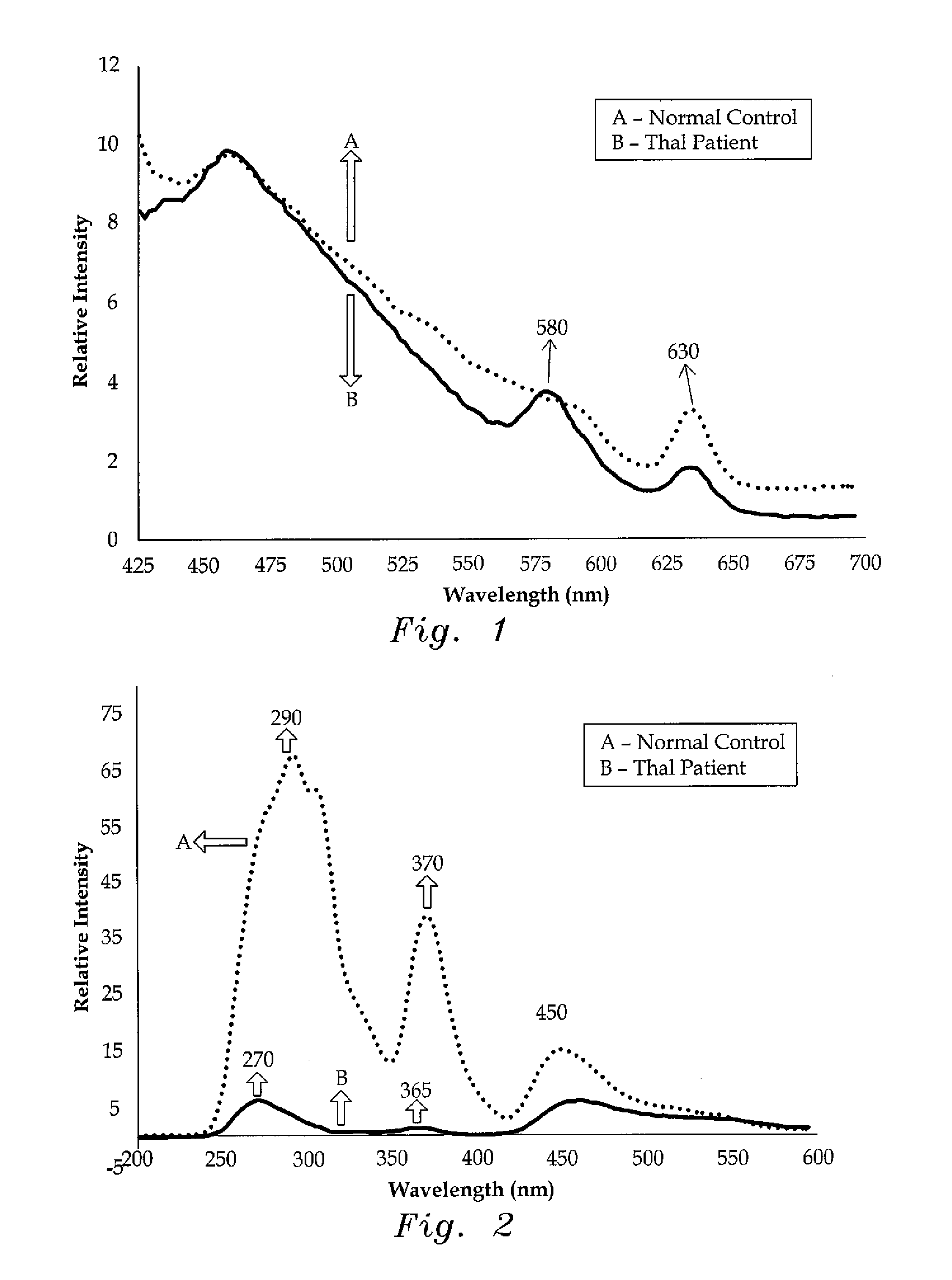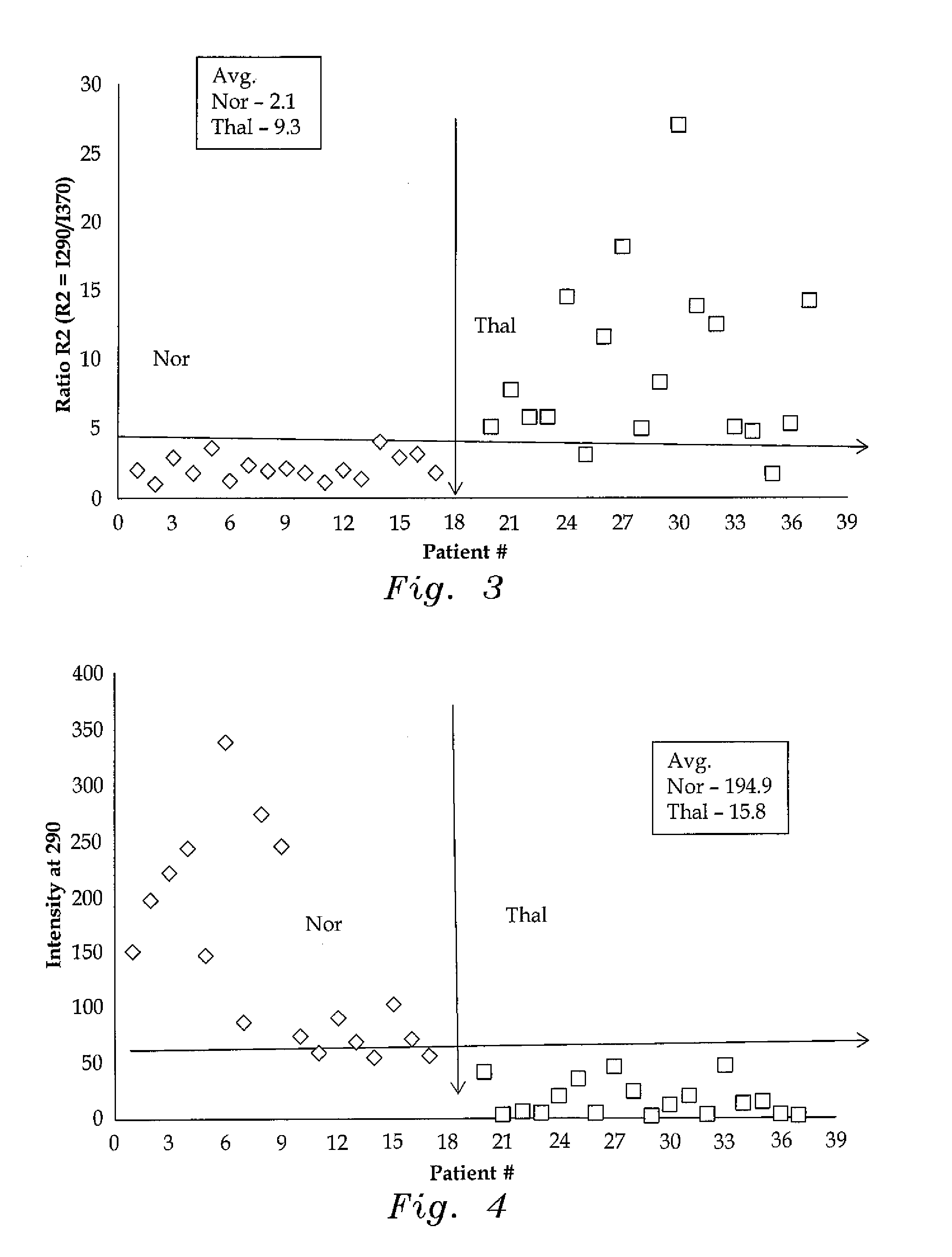Method of detecting thalassemia by optical analysis of blood components
a technology of optical analysis and thalassemia, which is applied in the field of spectroscopic methods for the analysis of blood components, can solve the problems of thalassemia causing significant complications, mild or severe anemia, iron overload, bone deformation,
- Summary
- Abstract
- Description
- Claims
- Application Information
AI Technical Summary
Benefits of technology
Problems solved by technology
Method used
Image
Examples
Embodiment Construction
[0022]The method of detecting thalassemia by optical analysis of blood components is a spectral detection method that is based on the fluorescence spectra of a set of biomolecules, including tyrosine, tryptophan, nicotinamide adenine dinucleotide, and flavin adenine dinucleotide, which are all found in blood plasma, and porphyrin, which is found in red blood cells (RBCs).
[0023]In experiments, the present method was tested with blood samples taken from 18 healthy human volunteers (i.e., the control group) and 21 patients who had already tested positive for thalassemia. For the control group, a blood sample of exactly 5 mL of venous blood was extracted from each volunteer, with the volunteers having ages ranging from 17 to 32. Each sample was collected in a violet, sterile vial. Each vial contained an ethylenediaminetetraacetic acid (EDTA) anticoagulant. Each vial was then gently rocked five times for adequate mixing of the EDTA and the whole blood. The vial was then centrifuged at 3,...
PUM
 Login to View More
Login to View More Abstract
Description
Claims
Application Information
 Login to View More
Login to View More - R&D
- Intellectual Property
- Life Sciences
- Materials
- Tech Scout
- Unparalleled Data Quality
- Higher Quality Content
- 60% Fewer Hallucinations
Browse by: Latest US Patents, China's latest patents, Technical Efficacy Thesaurus, Application Domain, Technology Topic, Popular Technical Reports.
© 2025 PatSnap. All rights reserved.Legal|Privacy policy|Modern Slavery Act Transparency Statement|Sitemap|About US| Contact US: help@patsnap.com



